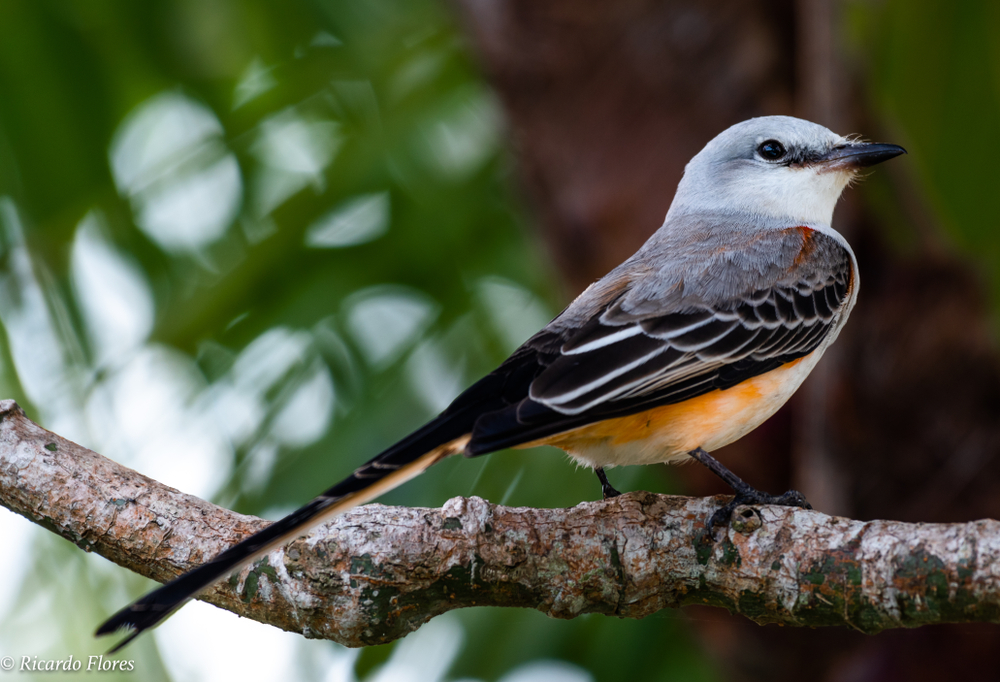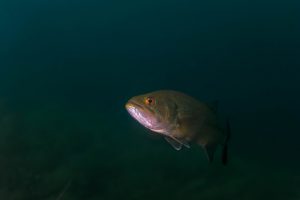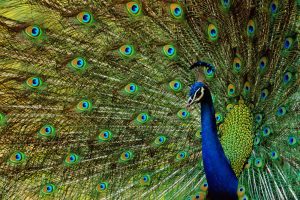Several states have birds that they deem important for varying reasons, making them the official state bird. Oklahoma is no different and has chosen one of the most beautiful birds for its state.
The scissor-tailed flycatcher is the state bird of Oklahoma and has been so for many years because it plays an integral part in the farming industry there.
It may not have been the first choice, but it quickly outshone the other options with its skills and lengthy forked-tail beauty.
Table of Contents
How did the scissor-tailed flycatcher become Oklahoma’s state bird?
As early as 1932, the Oklahoma Federation of Women’s Clubs held a poll to find out what kind of birds residents of Oklahoma would choose to have as their state bird.
The bobwhite quail came out on top. But ultimately, due to House Joint Resolution No. 21, a group of Oklahoma students, and the Audubon Society, gardens clubs, and wildlife advocacy groups, the scissor-tailed flycatcher was chosen.
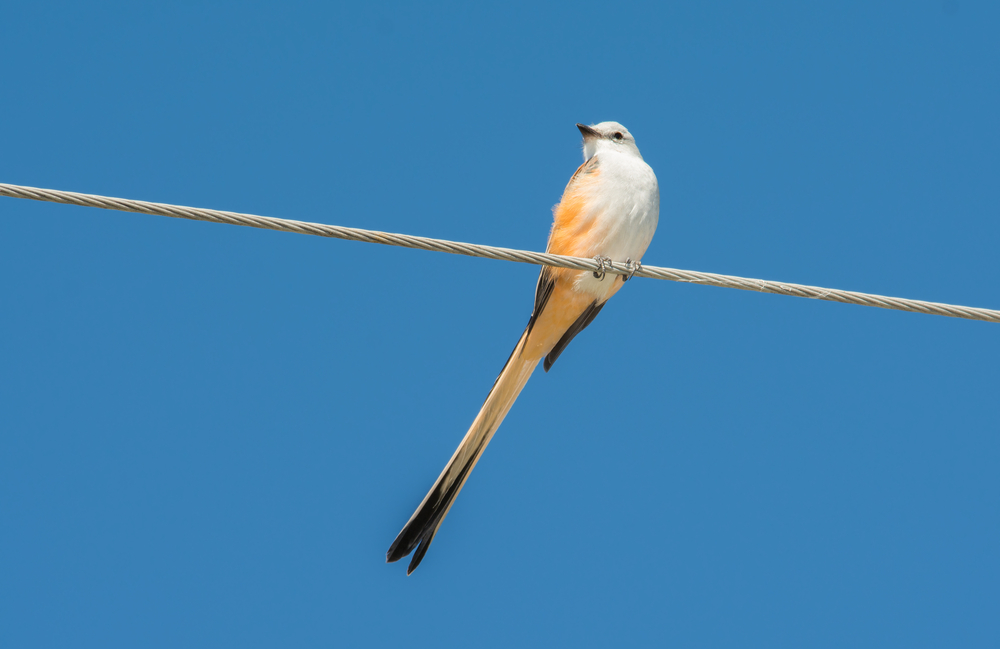
Because the bird eats grasshoppers, spiders, and other ground-dwelling creatures, the scissor-tailed flycatcher is an incredibly important bird to farmers as a form of pest control.
The scissor-tailed flycatcher is also the official state bird of Oklahoma because of its extensive nesting territory in the state and that no other state has proclaimed it.
What are some essential facts about the scissor-tailed flycatcher?
The scissor-tailed flycatcher, a gorgeous and graceful bird, makes its nesting grounds in Oklahoma.
Up to a thousand birds gather in late July before migrating south to Florida, Mexico, and Central America for the winter.
The scissor-tailed flycatcher, a legally protected species, feeds almost exclusively on non-useful and harmful insect species, like beetles, crickets, and grasshoppers. That makes it a precious economic resource.
The tail of this songbird resembles a scissor and can grow to be as long as the bird itself. Almost all of its prey, including insects, is caught by the scissor-tailed flycatcher through aerial hawking.
The scissor-tailed flycatcher’s nest comprises a variety of human-made objects like paper, cloth, and string.
Artificial materials made up 30% of the nests’ weight, according to one study. Even though the national population appears constant, Oklahoma is experiencing a decline.
What other names do people give the scissor-tailed flycatcher?
Scissortail, Texas bird-of-paradise, and swallow-tailed flycatcher are other names for the scissor-tailed flycatcher. The bird’s Latin name, Muscivora forficata, defines the bird in even greater detail than its popular names.
There are two distinct meanings of muscivora and forficate, which come from Latin words for “fly” and the Latin verb “to devour” (vorare).
Its classification is Tyrannus flycatcher or “tyrant flycatcher.” Several species of this genus fight larger birds, such as crows, hawks, and owls, in their breeding areas, earning the genus its name.
What distinguishes the scissor-tailed flycatcher from other flycatchers?
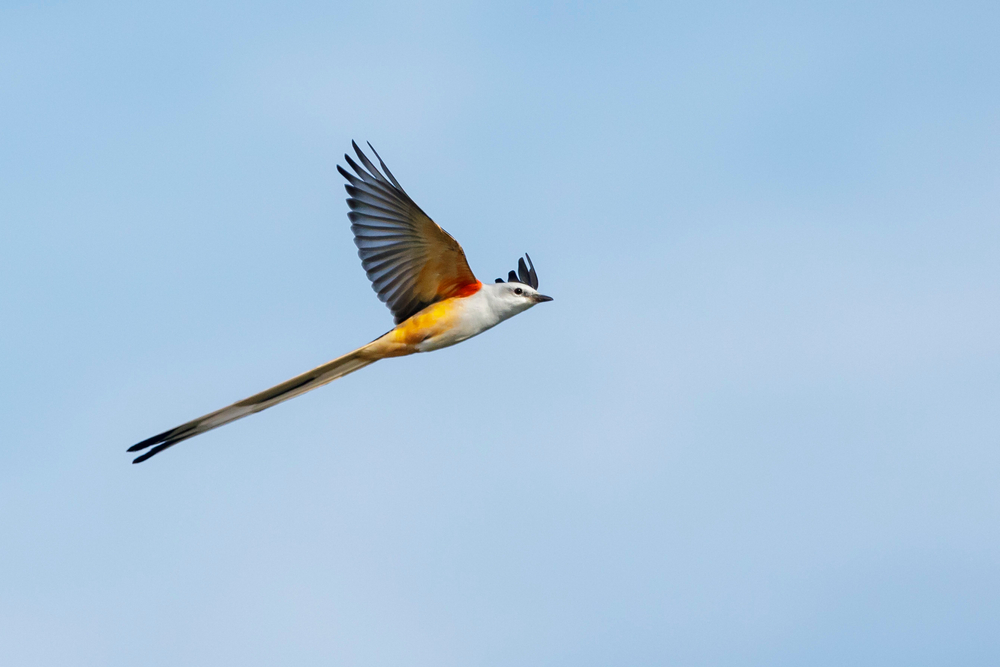
Adult scissor-tailed flycatchers have long, forked tails. In comparison to the female, the male’s tail is much longer. It has a white bottom that contrasts sharply with its dark upper wings and center seat and a completely white head and back.
These birds also have white underparts with a pink belly, a flank that is salmon-pink, and a salmon-pink underwing pattern.
In females, the red crown patch is diminished or nonexistent. On the underparts, the juvenile is a paler golden pink with a much shorter tail. Immature females share many characteristics with mature females.
What are similar species to the scissor-tail?
This species is similar to the western kingbird in appearance, but its belly lacks pure yellow tones, and its tail is more prolonged, thinner, and forked.
What is it about the state bird of Oklahoma that sets it apart from other birds?
Is it worth asking what makes the state bird of Oklahoma so unique? The scissor-like form of their tail is, of course, the culprit.
They can grab flying insects with their fork-like tails, which they use to elegantly twist and twirl and sweep up their prey with their wings.
What is the status and distribution of the scissor-tail?

These birds are common. Spring migration begins in mid-March and peaks in early April, with stragglers continuing into June.
By late September–early October, it reaches its zenith, with the last stragglers persisting throughout November.
While the numbers of this bird are declining in Oklahoma, its overall numbers nationwide keep it from being added to any conservation lists.
Where can you find scissor-tail flycatchers?
These birds are found in both North and Central America. They head south in the cold months and come back north during spring to breed and lay eggs in their nests.
Before their autumn migration, they gather in big roosts of up to a thousand birds in the latter days of summer. In both breeding and migration locations, the scissor-tailed flycatcher range has grown due to deforestation.
Do scissor-tail birds fly at a high rate of speed?
Rapid wingbeats and straight lines are the hallmarks of a scissor-tailed flycatcher, which travels up to 65 miles an hour. Aerial hawking is done by twisting and turning their lengthy scissor-like tail while flying.
Do scissor-tail flycatchers eat flies?
Using a perch in an open location, this flycatcher uses a sallying technique to collect insects in flight.
They grab them out of the air with a fast, fluttery flight. Once finished, the flycatcher goes back to its original perch, hitting its victim on the branch before it eats it.
The bird eats other insects, as well as a tiny bit of fruit, to complement its main diet of grasshoppers and crickets. The winter feeding habits of this species are similar to those of the eastern kingbird, which consumes an abundance of fruit.
What is the life cycle of a scissor-tail flycatcher?

Scissor-tailed flycatchers are nimble foragers who leap from where they sit to catch flying insects like bees and wasps or dive into the grass to capture spiders and grasshoppers. They can live for up to fifteen years.
There is no other flycatcher in Oklahoma that eats as many ground-dwelling insects as this one does. As much as half of their diet may comprise grasshoppers.
Flycatchers can’t digest the legs, wings, and other complicated body components of their insect meal and periodically regurgitate these objects as tiny pellets. During the winter months, small fruits and berries are what they consume.
What is sky dancing?
Male birds begin their famed “sky dance” as soon as they arrive in the state, and this is a common sight along highways in the warm months. To capture the attention of possible mates, the male displays this extravagant wooing show.
The male makes V-shaped flights after reaching around 100 feet in the air. You will hear a rolling, crackling sound as he flies into the air and dives in an irregular, zig-zag route. With his long, swaying tail, he appears even more graceful.
They may execute this “aerial ballet of extraordinary grace” throughout the summer, according to the majority of critics.
Nest-building techniques used by scissor-tailed flycatchers
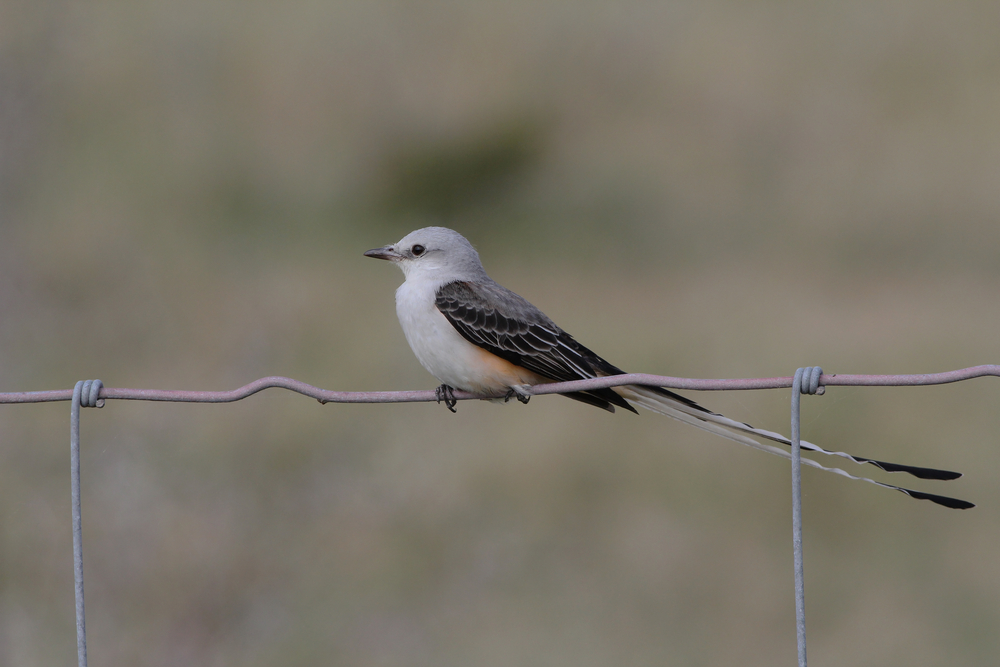
After mating, female scissor-tails build a large, cup-shaped nest 7–30 feet into the air on a horizontal branch or fork, which they abandon once the courtship is complete.
The birds typically use orchard, oak, elm, mesquite, and hackberry trees as perches.
The crossbars on utility poles and windmill towers are also used for nests. Weed stalks, cloth, rootlets, horsehair, and other fabrics make up the nest’s 4.5- to 6-inch diameter.
Females will wait to incubate their eggs until they have laid all of their clutches. During the summer, she typically has two clutches of four to six eggs each.
A cream-white color with brown patches and blotches adorn the eggs of this species. The female performs all incubation chores.
However, the male might sometimes sit above the eggs to cover or safeguard them if the female is not present at the nest.
What are the responsibilities of the male and female scissors?
The male is primarily responsible for protecting the territory from intruders and predators and bringing food to the female scissor-tail in the nest. Throughout the mating season, the female generates a brooding patch on her chest.
The absence of feathers in this area makes it easier for the female to transfer energy from her abdomen to the eggs. The eggs hatch after 12–14 days of incubation. After another two weeks, the scissor-tail chicks are ready to leave the nest.
What happens when the young leave the next?
In a few days, the first brood will have hatched, and the female will begin laying eggs in a new nest. For the first few weeks upon leaving the nest, young scissor-tails remain in their parents’ area to practice hunting for food.
Throughout the first summer, the tails of the young are shorter than those of the adults. They look like immature western kingbirds when they initially leave the nest because their seats aren’t particularly longer than that of other flycatchers.
Roosting
Following the breeding season, the birds begin assembling on roost trees in late August. There is a gradual buildup in the number of birds occupying these roosts until late September.
A roost can include as many as 1,000 birds. However, the vast majority are between 100 and 300 birds in size. During the day, the birds leave the nest in all directions searching for food, and they only come back right before sunset.
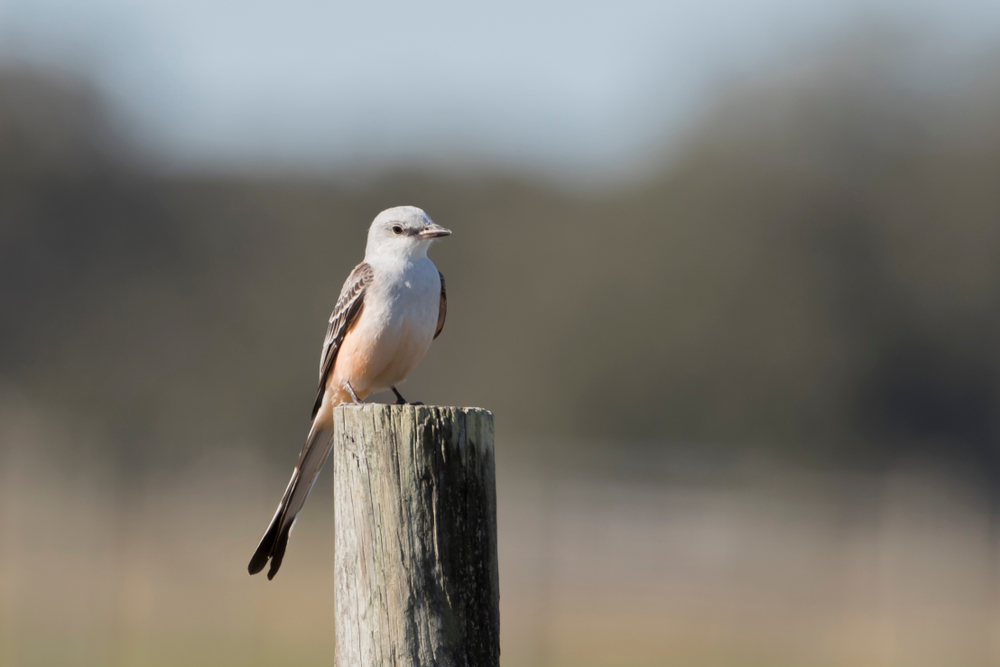
Each evening during mating season, males gather with other birds on a nearby roost tree before returning to the nest the following day. You can spot most roosts in older trees in isolated groves along streams or settlements.
Reports are that some scissor-tail roosts remain used for upwards of 20 years in a row. As the scissor-tails begin their fall migration in October, the number of birds returning to their nests steadily decreases.
Scissor-tails, like many songbirds, migrate at night. During the day, they rest and feed to increase their fat reserves in preparation for their night trip the next night.
Do scissor-tail flycatchers have a distinctive call?
Scissor-tails have quite a distinct song. As the song progresses, the pitch rises, and the pace increases, giving the impression that the flycatchers are playing with a squeaky toy. Trees and cables are familiar places from which they sing. Rather than learning their songs, Flycatchers likely rely on intrinsic clues.
Calls
In addition to squeaking, they also chirr and rattle their tails.
Additional sounds
Both sexes of scissor-tailed flycatchers create a high-pitched whirr with their wings when engaged in combat.

